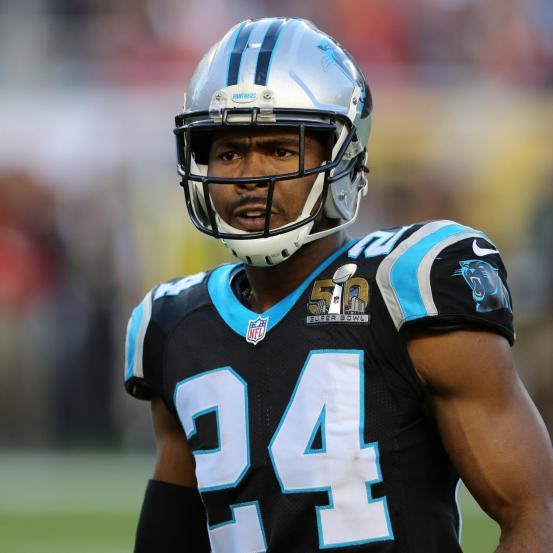- Commissioner’s statement on Ventura, Marte
- Ronnie O’Sullivan: Masters champion ‘felt so vulnerable’ in final
- Arron Fletcher Wins 2017 WSOP International Circuit Marrakech Main Event ($140,224)
- Smith challenges Warner to go big in India
- Moncada No. 1 on MLB Pipeline’s Top 10 2B Prospects list
- Braves land 2 on MLB Pipeline’s Top 10 2B Prospects list
- Kingery makes MLB Pipeline’s Top 10 2B Prospects list
- New Zealand wrap up 2-0 after Bangladesh implosion
- Mathews, Pradeep, Gunathilaka to return to Sri Lanka
- Elliott hopes for rain for Poli
Moneyball Is Changing the Way NFL Teams Assemble Their Rosters
- Updated: May 5, 2016

Are you ready to “embrace analytics”?
The phrase makes the marriage of research and scouting sound like a forbidden romance—a coach and a statistician locked in each other’s arms on the cover of some sleazy beach paperback. You can almost hear the dismissive eye roll when old-school types mention analytics. The Browns are a “Moneyball” team now. I don’t know what that means, and I don’t care; I just know what to blame when everything goes haywire.
Sneers and loaded buzzwords like “Moneyball” aside, football and analytics have been cohabitating for years. Some teams are openly analytical, such as the Browns and Jaguars, and some are more hush-hush, but everyone is using statistical research to shape their rosters, draft boards and salary-cap spreadsheets.
In the 10 years that I’ve been affiliated with Football Outsiders, I’ve seen analytic principles go from scoffed-at voice-in-the-wilderness theories (Running backs wear out quickly? Nonsense, nerd) to conventional wisdom (What kind of crazy Texas billionaire blows a top-five pick on a running back who will wear out quickly?). But this offseason and draft saw an explosion of analytics principles at work. “Moneyball,” for want of a better term, is reshaping NFL rosters.
Here’s the impact analytic principles had on some of the biggest transactions and most controversial decisions of the past few weeks—and what those same principles will mean for players and franchises in the months and years to come.
Bolder Draft-Day Deals
When the Browns traded down twice in last week’s draft to acquire a busload of additional picks, they were applying research published by Cade Massey and Richard H. Thaler from 2010. The scholarly examination of the NFL draft concludes: “Top draft picks are overvalued in a manner that is inconsistent with rational expectations and efficient markets and consistent with psychological research.”
In layman’s terms: Teams put too much stock in the value of shiny, big-name top prospects. In fact, the research indicates that draft results are so close to a lottery that the best course of action is to just buy a whole bunch of scratchers to increase your odds of getting lucky.
The Massey-Thaler research sounds like simple common sense for teams typically at the very top of the draft board, whose first-round picks are in demand and whose needs are many. It’s hard to argue that the Browns would have been better off with one Carson Wentz or Joey Bosa instead of a sampler platter of Corey Coleman, Shon Coleman, Cody Kessler, the other players drafted with extra picks last week and the ones they will be able to draft next year. It doesn’t take a statistician to figure out that teams like the Browns and Titans should stock up on groceries instead of splurging on one luxury.
This becomes interesting when the Chiefs trade out of the first round and down in the second round; or when the Patriots, already without a first round-pick, trade one of their second-rounders for a third- and fourth-rounder. These are strong teams (with quietly efficient analytics departments) stockpiling low-risk investments instead of looking for one “missing piece” of a Super Bowl puzzle.
So when stat geeks conquer the world, all 32 teams will trade out of the first round, right? Wait, that’s impossible! What’s more likely to happen is that motivated sellers of high picks will find a market full of increasingly judicious buyers. That will drive down demand. Hauls like the Titans and Browns received from the Rams and Eagles will be harder to come by. Some bargain hunter that is really sold on a particular player might be able to move up over a dozen slots in the first round for some third-day stocking stuffers in a bearish draft-trade environment.
The next time the Browns try to stockpile picks by trading down, they may find the Patriots waiting for them with a fourth-round pick, a cocky grin and a clear sense of how market corrections work.
Fringe Veterans in Jeopardy
All those rookie draft picks have to go somewhere. Veteran journeymen have always been in trouble when teams go into extreme-makeover mode. But cuts have gotten quicker and deeper as more teams begin to embrace the concept of replacement value, which represents the quality of play of the players in the readily-available pool of talent: the late-round picks, practice-squaders and street free agents …
continue reading in source www.bleacherreport.com
